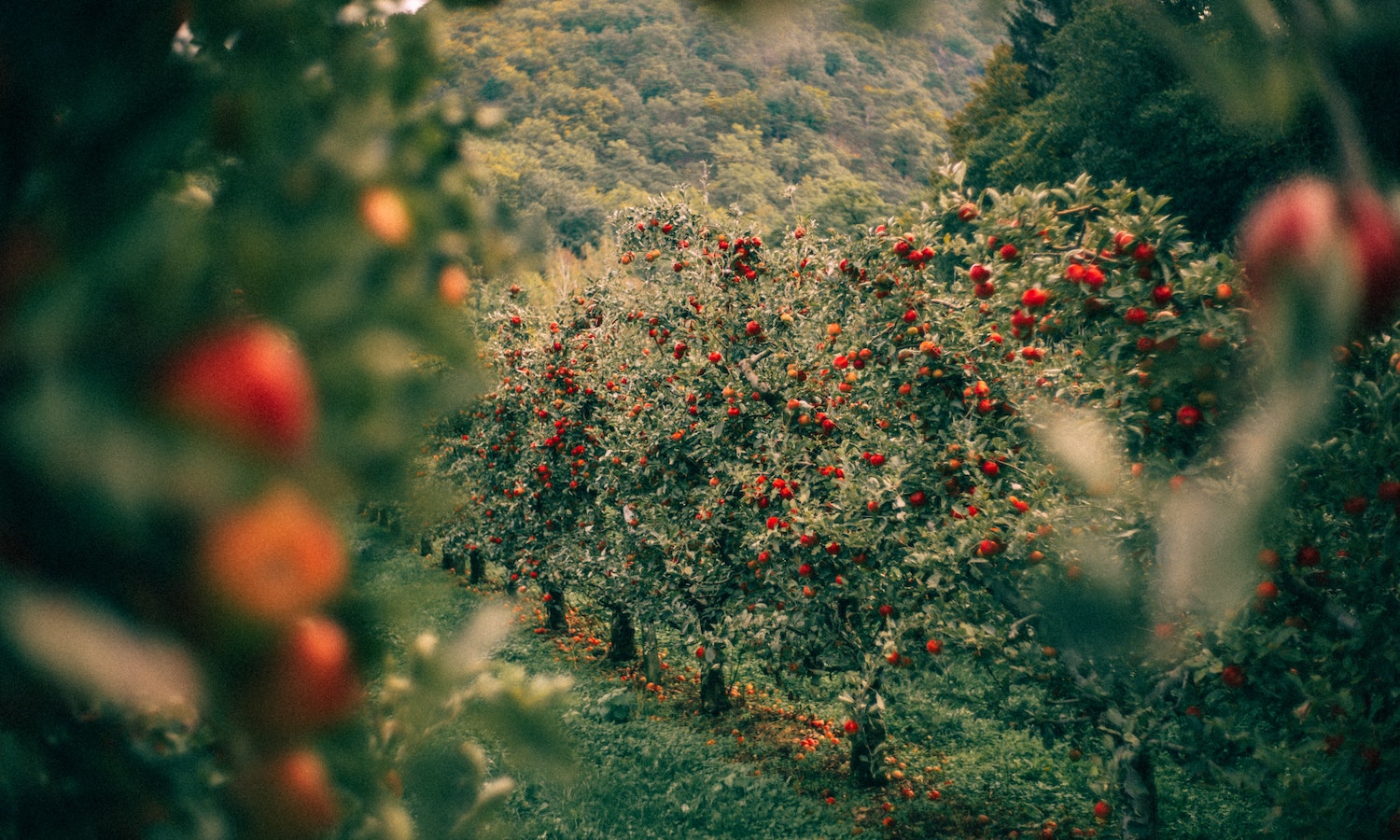The apple breeding program at the University of Minnesota’s Horticultural Research Center recently released its latest apple variety. The variety Triumph, the apple contains two different genes for resistance against apple scab, the most common fungal disease impacting apple trees in Minnesota.
With hot, dry summers and extremely cold winters, the university’s apple breeding program works to grow and produce in a climate where apples are not traditionally grown. Their research has produced 28 different cold hardy varieties, including Honeycrisp and SweeTango, in its nearly 115-year history. The Triumph apple is the most recent release since the start of the program in the early 1900s.
Despite the university’s success developing new varieties, “most of the varieties that you would buy in the supermarket, with the exception of Honeycrisp, will not grow here,” David Bedford, Senior Research Fellow at the University of Minnesota’s Horticultural Research Center tells Food Tank. “This would be pretty much a non-apple growing area, except that our program put some effort into it.”
The Triumph apple, the child of Honeycrisp and Liberty varieties, contains two forms of genetic scab resistance. Caused by the fungus Venturia inaequalis, apple scab can be found around the world wherever apples are grown. Scab is the most common disease for apples across the United States and can cause up to 100 percent crop loss and can significantly reduce fruit marketability, according to the New Hampshire College of Life Science and Agriculture.
The best way to manage and prevent scab is to plant disease resistant varieties, according to the Univerisity’s Horticultural Research Center. The other option is to apply fungicides, which can be costly, difficult to apply, harmful to the environment, and can only be used to prevent infection rather than treat it. The Triumph apple, with double the resistance to scab than most apples on the market, “cuts down the chances of the pathogen mutating. The odds are that it will be much more difficult for a pathogen to get through two genetic hurdles,” Bedford tells Food Tank.
Research from the U.S. Environmental Protection Agency outlines that climate change is altering weather patterns globally by impacting humidity, rainfall and temperatures. As a result of climate change, the perfect region for growing apples is slowly creeping northwards. While the University of Minnesota focuses on apple breeding for cold climates, “breeding for climate change is just coming to the forefront,” Bedford continues. “Hopefully climate is changing slowly enough that conventional breeding can hold on.”
The University of Minnesota’s Horticultural Research Center reports that warm, humid, and rainy weather in the spring and summer creates ideal conditions for apple scab. And a recent study from the Institute for Breeding Research on Fruit Crops suggests that climate change poses many major threats to apple production worldwide. “We’re seeing more extremes in everything, including rainfall. Rainfall is what really makes this apple scab pathogen comfortable,” Bedford tells Food Tank.
After 30 years in research and development, Bedford claims that the Triumph apple is a “triumph over apple scab.” Bedford tells Food Tank, “There are really three stakeholders that win in this scenario. First, the environment is better for not having used as many chemicals. The grower is happy to not put on as many chemicals. And the consumer gets fruit with fewer chemicals applied.” This makes Triumph a good option for home gardeners and organic farms, “it’s a great low-maintenance tree,” says Research Technician Kate Scapanski.
Each new apple takes close to 30 years from initial breeding until it is released to the market. Each seed takes between five and six years to mature to bearing age. At this point, researchers taste the fruit. The University of Minnesota has 20,000 trees with fruit that researchers taste once a week during the growing season. “Any given week, there can be 300 or 400 apples that are ready to be tasted. A big day can be tasting 500 to 600 apples a day,” Bedford says, “It’s not as much fun as it sounds!”
The University of Minnesota’s main breeding priorities are texture and flavor; if an apple doesn’t impress the jury of tasters, they take it out of the running. This leads to about 4,000 unique varieties of apples that don’t make the cut each year. Scapanski describes Triumph apples as, “pleasant, reliable, and sustainably good apples. They are well balanced with a solid texture that wouldn’t fracture like a Honeycrisp would.” At the University of Minnesota, an apple has a 1 in 10,000 chance of being released to the market, “I call it legalized gambling,” says Bedford. The Triumph apple beat the odds and consumers will start seeing them in grocery stores in a few years.
The University of Minnesota uses conventional breeding methods to produce roughly 15,000 new crosses each year. Conventional breeding allows researchers to select parents with desirable traits and create new varieties in the hopes that the child will possess those same traits. “With conventional breeding, we get possibilities that we didn’t even know were possible. Good and bad, but we find things and I think ‘wow, that is a different level of texture than I even knew was possible,’” says Bedford.
With each new release, Bedford says they continue trying to raise the bar. The criteria is getting more strict with improvements to taste, texture, and disease resistance. “The last thing we need to do is put another mediocre apple out there.”
Articles like the one you just read are made possible through the generosity of Food Tank members. Can we please count on you to be part of our growing movement? Become a member today by clicking here.
Photo courtesy of Jorg Bauer, Unsplash











